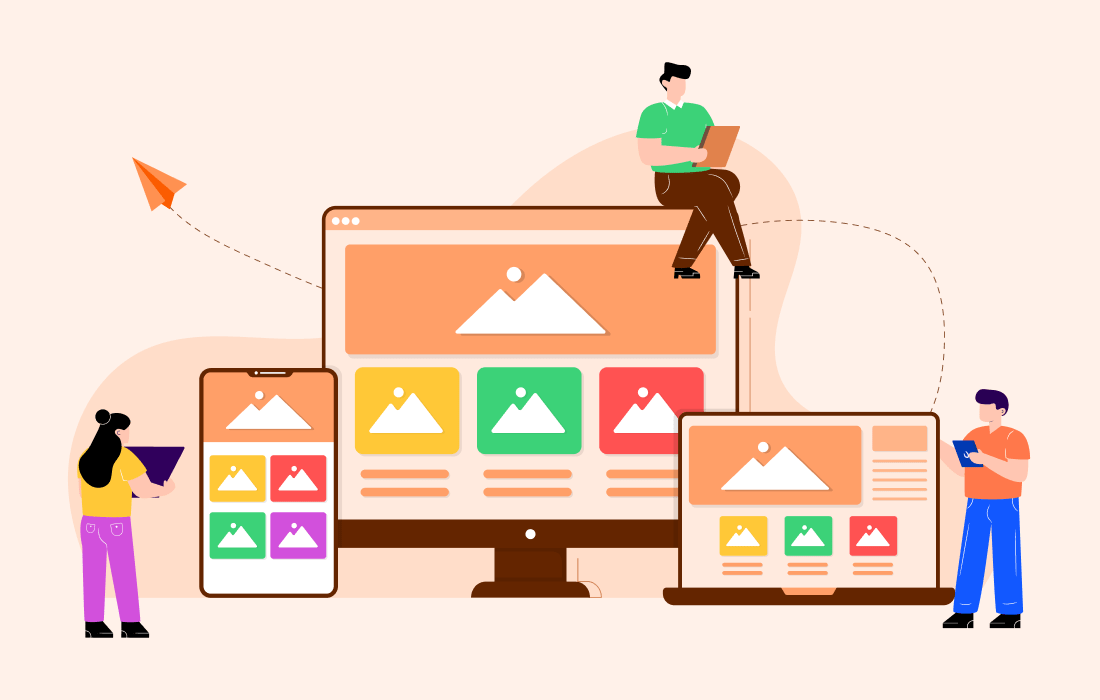In today's digital age, a website is no longer a luxury - it's a necessity. It's your online storefront, your digital brochure, and a vital tool for attracting new customers and building brand awareness. But with so many websites out there, how do you make yours stand out? The answer lies in the art of professional website design.
A well-designed website isn't just about aesthetics; it's about creating a user-friendly experience that resonates with your target audience and drives results. Here are some key design tips to keep in mind:
 Before you even touch a design tool, take a step back and solidify your brand identity. What are your brand colors, fonts, and overall tone of voice? Your website should be a visual representation of your brand, creating a consistent and recognizable experience for visitors.
Before you even touch a design tool, take a step back and solidify your brand identity. What are your brand colors, fonts, and overall tone of voice? Your website should be a visual representation of your brand, creating a consistent and recognizable experience for visitors.
 In today's mobile-first world, your website needs to be responsive, meaning it adjusts seamlessly to different screen sizes and devices. A website that looks great on a desktop computer but is clunky on a smartphone will frustrate potential customers and drive them away.
In today's mobile-first world, your website needs to be responsive, meaning it adjusts seamlessly to different screen sizes and devices. A website that looks great on a desktop computer but is clunky on a smartphone will frustrate potential customers and drive them away.
1. Define Your Brand Identity:
 Before you even touch a design tool, take a step back and solidify your brand identity. What are your brand colors, fonts, and overall tone of voice? Your website should be a visual representation of your brand, creating a consistent and recognizable experience for visitors.
Before you even touch a design tool, take a step back and solidify your brand identity. What are your brand colors, fonts, and overall tone of voice? Your website should be a visual representation of your brand, creating a consistent and recognizable experience for visitors.
2. Prioritize User Experience (UX):
Imagine your website as a journey for your visitors. Every element, from the navigation to the layout, should be intuitive and easy to navigate. Put yourself in your user's shoes and ask: "Can they find the information they need quickly and easily?" A seamless UX keeps visitors engaged and coming back for more.3. Embrace Visual Appeal:
High-quality visuals are powerful tools for grabbing attention and conveying information. Use captivating images, clear graphics, and professional videos to showcase your products, services, and brand story. Remember, visuals are often the first thing visitors notice, so make a strong first impression.4. Content is King (and Queen):
Compelling content is the backbone of any successful website. Informative blog posts, engaging product descriptions, and clear calls to action all play a crucial role in converting visitors into leads or customers. Ensure your content is well-written, relevant to your audience, and optimized for search engines.5. Responsiveness is Key:
 In today's mobile-first world, your website needs to be responsive, meaning it adjusts seamlessly to different screen sizes and devices. A website that looks great on a desktop computer but is clunky on a smartphone will frustrate potential customers and drive them away.
In today's mobile-first world, your website needs to be responsive, meaning it adjusts seamlessly to different screen sizes and devices. A website that looks great on a desktop computer but is clunky on a smartphone will frustrate potential customers and drive them away.

